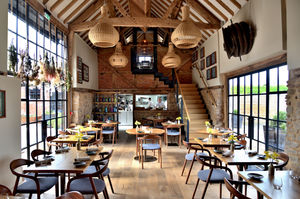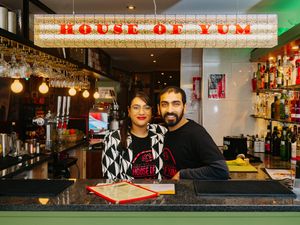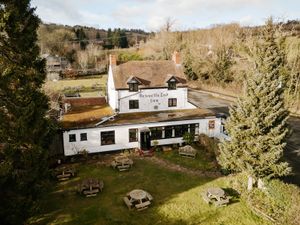The restaurants we said goodbye to in 2023 and the ones that keep rising to new challenges
It’s been the year where a number of restaurants simply ran out of road. The harsh economic climate, the dwindling cash reserves, the lack of customers, and the triple whammy of Brexit, Covid, and the war in Ukraine meant we said a fond farewell to a number of restaurants we’d loved.

Foremost among those was Pensons, near Tenbury Wells, just over the south Shropshire border. For some time the region’s only remaining Michelin-starred restaurant, the challenges of running a rural restaurant in an area where people need to travel became too much.

Having dazzled for a number of years, having won and retained a Michelin star, having secured a Green Michelin star too, for sustainability, the restaurant closed its doors. It was a sad way to end the year for the owners, staff, and suppliers, who’d built a rock solid business that had been hit by higher prices, the cost of living crisis, and the challenges that many face.
Perhaps more significantly, it finally brought the curtain down on a generation of Michelin-starred dining for Shropshire and its hinterland. That had begun at the Millennium, when Ludlow secured three Michelin stars at Mr Underhills, The Merchant House, and Hibiscus, plus a Michelin Bib Gourmand at The Oaks. The gold streak continued as Hibiscus ascended to two Michelin stars, before the arrival of Will Holland’s La Becasse, which also won a star. Stephanie Borie secured a star at The Chequers, too, on the Shropshire border with mid Wales.
Those restaurants gradually closed over time, leaving Pensons as the last venue standing, before the harsh economic winds took their toll and led to a sad closure. Cedric Bosi retains a Michelin Bib Gourmand for Ludlow, but the era of stars has now well and truly passed.
Those harsh economic winds have really been the story of 2023. Many restaurants just about made it through the pandemic, thanks to furlough, any money they’d got in the bank, and the determination of local residents to support their local.
Across Shropshire, Staffordshire, and the Black County, most managed to survive, though all were hard hit.
Brexit has been the disaster that keeps taking, reducing the talent pool of chefs and front-of-house staff, leading to a crisis in staffing, spiralling wages, and poor retention of employees. The war in Ukraine and the resulting high energy costs have been remarkably challenging, given the high reliance of all restaurants on energy for their cookers and to keep dining rooms warm.
The wider economic malaise has been a tougher issue. While restaurateurs have been able to tinker with prices, adjust menus, and find creative ways to offset some of their losses, the one thing that can’t overcome is a lack of trade. And as the economy has stalled, the number of people eating out has fallen. Restaurants are chasing the same, limited spend and there have been innumerable sleepless nights and tearful phone calls among operators trying to find a way through.
The outlook for 2024 isn’t much better, of course, and so there’ll inevitably be further closures in the not-distant future. December brings feast, as we enjoy festive parties and seasonal dinners, but January brings famine, as belts tighten and people cut back. By February, a number of operators will have gone. It’s not just a question of ‘only the fittest survive’.
The conditions presently are so tough that even the fittest and best are finding themselves up against it. Hospitality, the industry that suffered so much during the pandemic, remains a Cinderella trade among politicians who resist calls for VAT relief or other measures that would stem the flow of losses.
That’s not to say the region isn’t blessed with great restaurants; it very much is. It’s also supported by exceptional producers, many of whom stock eateries across Shropshire, Staffordshire, the Black County and Birmingham.
Birmingham remains one of the nation’s finest places in which to eat. It’s a short drive for all of us and the variety, quality, and diversity is second only to London. The city has retained a clutch of Michelin stars for Purnell’s, Simpson’s, Carter’s, Adam’s, and Opheem, while there are half a dozen others that form a chasing pack.
The nation’s capital is ahead, as is the Lake District, but no other region in the UK can match the quality available in Britain’s Second City. It’s not simply high end dining that attracts great talent, it’s also the neighbourhood curry houses, the rare and unusual restaurants that focus on a particular nation’s cuisine, and the independent mid-priced venues that provide affordable dining for those on a budget.
Across the region, Lichfield remains a must-visit destination for discerning diners who fancy the best. Upstairs By Tom Shepherd continues to set the standards to which others aspire. Shepherd has had a remarkable year, having earned additional followers from a successful stint on Great British Menu while enjoying the acclaim that success can bring. He’s joined by such high quality establishments as Larder and Liam Dillon’s The Boat Inn, which all dazzle and delight. There’s food for all palates, however, and a great wagyu burger that will melt in the mouth is cooked by Jack and Lucy at Dubberley Delicious.

And talking of burgers, there’s a remarkable range in some of the region’s least likely destinations. From Shrewsbury and The Beefy Boys to Kidderminster and Smash My Patty, the lure of great beef patties with plenty of toppings has excited customers and encouraged restaurateurs as we all head out for a bit of comfort food.
Comfort comes in all shapes and sizes and great Sunday lunches remain available across the region. Few do the job better than The Pheasant at Neenton, a delightful, rural restaurant that’s worth a drive, not far from Bridgnorth.
For all the challenges, the region remains an excellent place in which to eat – and long may that continue.





